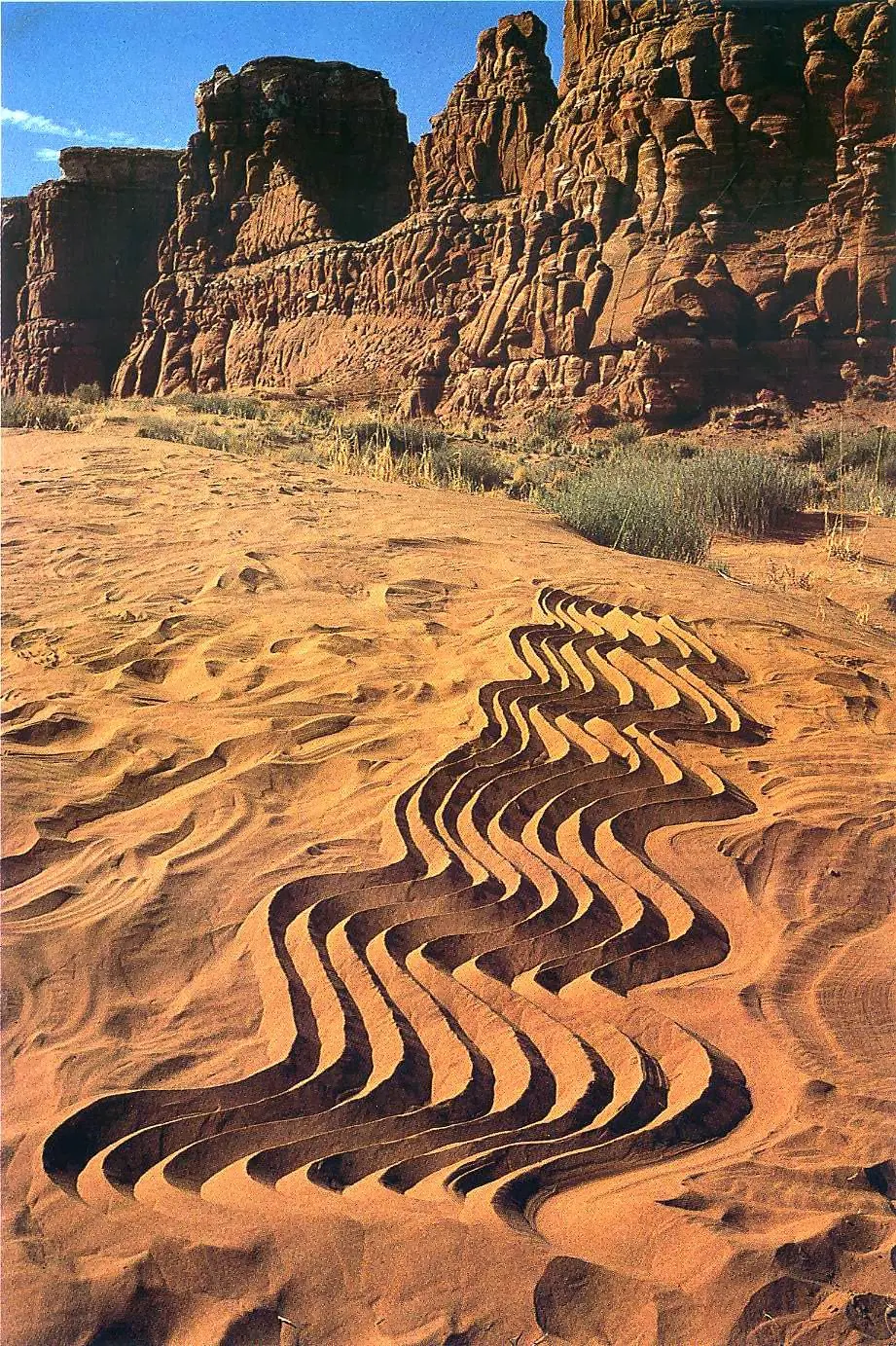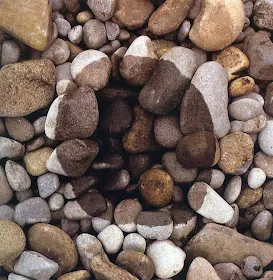Andy Goldsworthy is
a brilliant British artist who collaborates with nature to make his creations.
Besides England and Scotland, his work has been created at the North Pole, in
Japan, the Australian Outback, in the U.S. and many others.
Goldsworthy regards
his creations as transient, or ephemeral. He photographs each piece once right
after he makes it. His goal is to understand nature by directly participating
in nature as intimately as he can. He generally works with whatever comes to
hand: twigs, leaves, stones, snow and ice, reeds and thorns.
On a typical autumn
day, Andy Goldsworthy can be found in the woods near his home in Penpont,
Scotland, maybe cloaking a fallen tree branch with a tapestry of yellow and
brown elm leaves, or, in a rainstorm, lying on a rock until the dry outline of
his body materializes as a pale shadow on the moist surface. Come winter, he
might be soldering icicles into glittering loops or star bursts with his bare
fingers. Because he works outdoors with natural materials, Goldsworthy is
sometimes portrayed as a modern Druid; really, he is much closer to a
latter-day Impressionist.
Like those
19th-century painters, he is obsessed with the way sunlight falls and flickers,
especially on stone, water and leaves. Monet—whose painting of a sunrise gave
the Impressionist movement its name—used oil paint to reveal light's
transformative power in his series of canvases of haystacks, the Rouen
Cathedral and the Houses of Parliament. Goldsworthy is equally transfixed with
the magical effect of natural light. Only he has discovered another, more
elemental way to explore it.
As a fine arts
student at Preston Polytechnic in northern England, Goldsworthy, disliked
working indoors. He found escape nearby at Morecambe Bay, where he began
constructing temporary structures that the incoming tide would collapse. Before
long, he realized that his artistic interests were tied more closely to his
youthful agricultural labors in Yorkshire than to life classes and studio work.
The balanced boulders, snow arches and leaf-rimmed holes that he crafted were
his versions of the plein-air sketches of landscape artists. Instead of
representing the landscape, however, he was drawing on the landscape itself.
Throughout the 20th
century, artists struggled with the dilemma of Modernism: how to convey an
experience of the real world while acknowledging the immediate physical reality
of the materials—the two-dimensional canvas, the viscous paint—being used in
the representation. Goldsworthy has cut his way clear.
By using the
landscape as his material, he can illustrate aspects of the natural world—its
color, mutability, energy—without resorting to mimicry. Although he usually
works in rural settings, his definition of the natural world is expansive.
"Nature for me isn't the bit that stops in the national parks," he
says. "It's in a city, in a gallery, in a building. It's everywhere we are."
Goldsworthy's principal
artistic debt is to "Land Art," an American movement of the 1960s
that took Pollock's and de Kooning's macho Abstract Expressionism out of the
studio to create giant earthworks such as Robert Smithson's Spiral Jetty in the
Great Salt Lake of Utah or Michael Heizer's Double Negative in Nevada. Unlike
Smithson and Heizer, however, Goldsworthy specializes in the ephemeral.
A seven-foot-long
ribbon of red poppy petals that he stuck together with saliva lasted just long
enough to be photographed before the wind carried it off. His leaves molder,
his ice arabesques melt. One work in which he took special joy, a sort of
bird's nest of sticks, was intended to evoke a tidal whirlpool; when the actual
tide carried it into the water, its creator marveled as it gyrated toward
destruction.
The moment was
captured in Rivers and Tides, a documentary film by Thomas Riedelsheimer that
portrayed Goldsworthy at work and underscored the centrality of time to his
art.
Even those stone
stacks and walls that he intends to last for a long time are conceived in a
very different spirit from the bulldozing Land Art of the American West. An
endearing humility complements his vast ambition. "There are occasions
when I have moved boulders, but I'm reluctant to, especially ones that have
been rooted in a place for many years," he says, noting that when he must
do so, he looks "for ones on the edge of a field that had been pulled out
of the ground by farming. The struggle of agriculture, of getting nourishment
from the earth, becomes part of the story of the boulder and of my work."
The modesty in his
method is matched by a realism in his demands. He knows that nothing can or
should last forever. Once a piece has been illuminated by the perfect light or
been borne away by the serendipitous wave, he gratefully bids it a fond
farewell.
© Andy Goldsworthy.
All copyright remains with the Artist.
Using an endless
range of natural materials—snow, ice, flowers, leaves, icicles, mud,
pine-cones, stones, twigs, thorns, bark, rock, clay, feathers, petals,
twigs—Andy Goldsworthy creates outdoor artwork that is usually transient and
disappear shortly after creation. Just before they disappear, he takes
photographs of his work.














































Δεν υπάρχουν σχόλια:
Δημοσίευση σχολίου